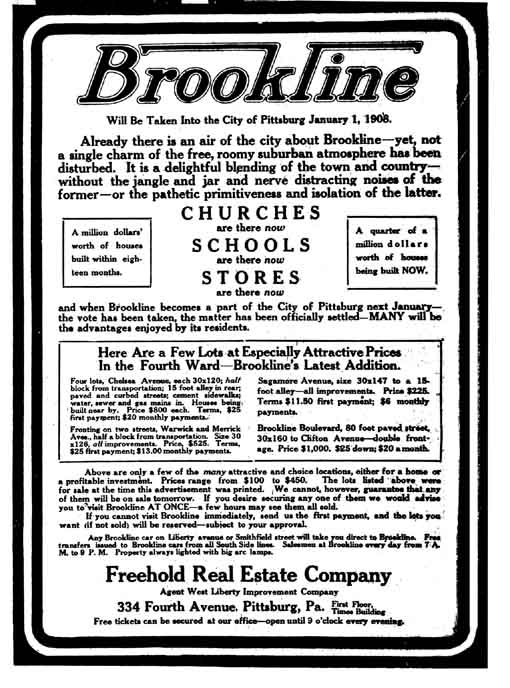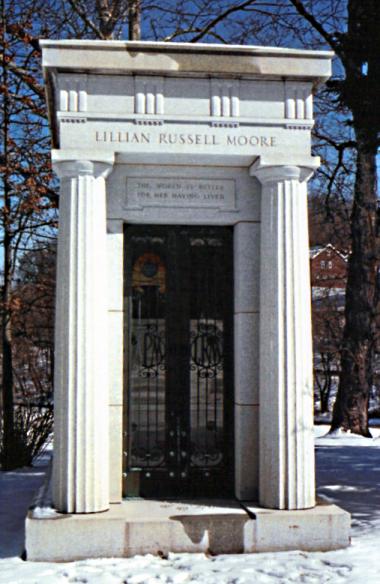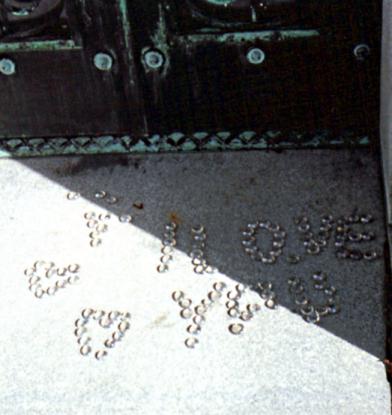
Enlarged from a 1914 advertisement, an engraving of the J. O’Neil Sanitary Storage building, on Diamond Street, probably uptown. Fire Proof Storage for Price of Fire Trap! You carry your own key! The you-store-it industry is obviously nothing new.
Everyone loves to talk about how much worse things are now than they were then. The golden-age fallacy causes us to imagine that our current state of sin and corruption is a decline from the high standards of the generations before us.
Thanks to the Library of Congress’ collection of printed ephemera, here is a notice (click to enlarge) that would have greeted hotel guests in Pittsburgh in the Victorian age, that time of strict morality and righteous virtue:
An editorial cartoon by Jamieson of the Dispatch from 1906, when the need for a subway in Pittsburgh was already obvious and urgent. The subway downtown opened in 1985, seventy-nine years later.


Brookline today is a pleasant city neighborhood whose central avenue, Brookline Boulevard, is the broadest commercial street in Pittsburgh–a fact that will greatly surprise visitors from other cities, where residential streets may well be broader than Brookline Boulevard. In 1905, it was mostly vacant lots, but this advertisement promises a glowing future that–for the most part–actually came to pass. The neighborhood will enjoy even greater advantages when it is taken into the city of Pittsburgh: “the vote has been taken, the matter is officially settled.” The acrimonious annexation of Allegheny was still very much up in the air at that point, and the public would need assurance that Brookline would not present similar difficulties.

Lillian Russell may be the most celebrated beauty in the history of the United States.

Her fourth and last husband was a Pittsburgh newspaperman, which earned her a mausoleum in the Allegheny Cemetery. On Valentine’s Day, someone left glass pebbles spelling out “I love you” in front of the door.




The well-dressed gentleman could outfit himself and his son completely at Kaufmann’s (now Macy’s) downtown. And he could do it in German, or any of several other languages, if he had trouble dealing with English. Department stores were careful to keep clerks fluent in the major languages of their clientele: clients expected that level of service. (Advertisement from the Volksblatt, November 10, 1892.)

Father Suitbert Mollinger was the greatest collector of holy relics in history, and his collection (the largest in the world outside the Vatican) still lives in the chapel he built on Troy Hill to accommodate it. But Father Mollinger was more than a priest and a collector: he was also a healer. He had a reputation for miraculous cures. He also had medical training, which gave him an edge on the competition in the miracle-cures department. And even six months after his death, as we see here, he was still in the patent-medicine business.

This advertisement comes from the Volksblatt, one of three German dailies in Pittsburgh in 1892. The text advertises Father Mollinger’s original-recipe cures for catarrh, rheumatism, and other common diseases, which are to be had from a druggist on Federal Street in Allegheny (now the North Side). You know they’re authentic because no one could forge that beard.
If the addresses have not changed, this druggist was in the block of Federal Street where PNC Park is now.